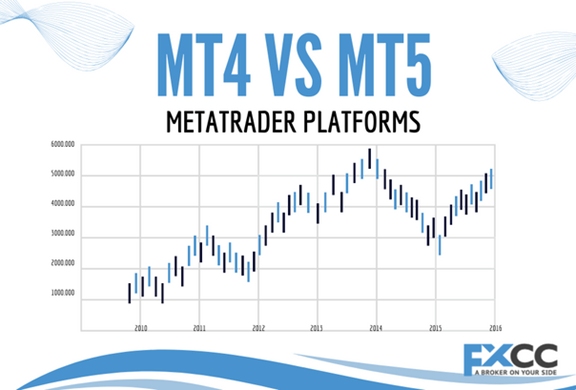In the fast-paced world of forex trading, selecting the ideal platform is akin to choosing the perfect weapon. MetaTrader 4 (MT4) and MetaTrader 5 (MT5) stand tall as two of the most dominant contenders. This in-depth analysis equips you with the knowledge to decipher their strengths, weaknesses, and key distinctions, empowering you to make a strategic choice.

Unveiling the MetaTrader Legacy
MetaTrader 4: The Forex Frontrunner
Released in 2005, MT4 has become synonymous with user-friendliness and robust functionality. It caters specifically to forex traders, offering a plethora of charting tools, technical indicators, and the ever-popular Expert Advisors (EAs) for automated trading.
MetaTrader 5: The Multi-Market Maestro
Five years later, in 2010, MT5 emerged as the next generation platform. It boasts an enhanced interface and transcends the forex realm, embracing a wider range of markets like stocks, futures, and commodities.
Delving into the Key Differences
Trading Arena:
- MT4: A haven for forex enthusiasts, it allows hedging (holding opposing positions in the same instrument) and offers four pending order types.
- MT5: A multi-market maestro, it supports hedging and netting (offsetting positions with opposite trades in different instruments), along with six pending order options.
Charting and Analysis Tools:
- MT4: Provides 9 timeframes for analysis and 30 built-in technical indicators. Its Depth of Market (DOM) functionality is limited.
- MT5: Offers a wider range of 21 timeframes and 38 technical indicators. It boasts enhanced DOM functionality, crucial for stock and futures traders.
Programming Languages and EAs:
- MT4: Utilizes MQL4, a user-friendly language for creating trading bots and indicators. Due to its long-standing presence, it has a vast library of existing EAs.
- MT5: Employs MQL5, a more powerful and versatile language compared to MQL4. It facilitates the development of complex strategies and faster execution. As the platform gains traction, the library of EAs and indicators is steadily growing.
Backtesting Capabilities:
- MT4: Relies on single-threaded backtesting, which can be slower and analyze only one currency pair at a time.
- MT5: Leverages multi-threaded backtesting, offering significantly faster and more efficient analysis. It allows simultaneous backtesting of multiple currency pairs for a comprehensive picture.
Order Execution and Market Access:
- MT4: Provides three order execution methods: Instant, Request, and Market. Its market access is more limited compared to MT5.
- MT5: Offers four execution options: Instant, Request, Market, and Exchange. It grants direct access to centralized trading exchanges, advantageous for non-forex trading.
User Interface and Experience:
- MT4: Features an intuitive and user-friendly interface, ideal for beginners. It requires fewer system resources.
- MT5: Showcases a modern interface with additional features, catering to more advanced users. Its enhanced capabilities demand slightly more system resources.
Choosing Your Trading Champion
Both MT4 and MT5 are robust and reliable platforms, each catering to distinct preferences.
- MT4: If forex is your primary focus, and you value user-friendliness and a vast pool of community-developed resources, MT4 might be your ideal partner.
- MT5: Are you a multi-asset trader seeking advanced analytical tools and a platform that can evolve with your trading strategies? MT5 could be your weapon of choice.

Conclusion:
In conclusion, both MT4 and MT5 are strong contenders in the trading platform arena. MT4 reigns supreme for forex traders who prioritize user-friendliness and a wealth of existing resources from the community. On the other hand, MT5 caters to multi-asset traders seeking a platform that expands with their trading goals and offers advanced analytical tools. By carefully considering the key distinctions between these two platforms, you can make an informed decision and select the ideal weapon to conquer the fast-paced world of forex trading.


